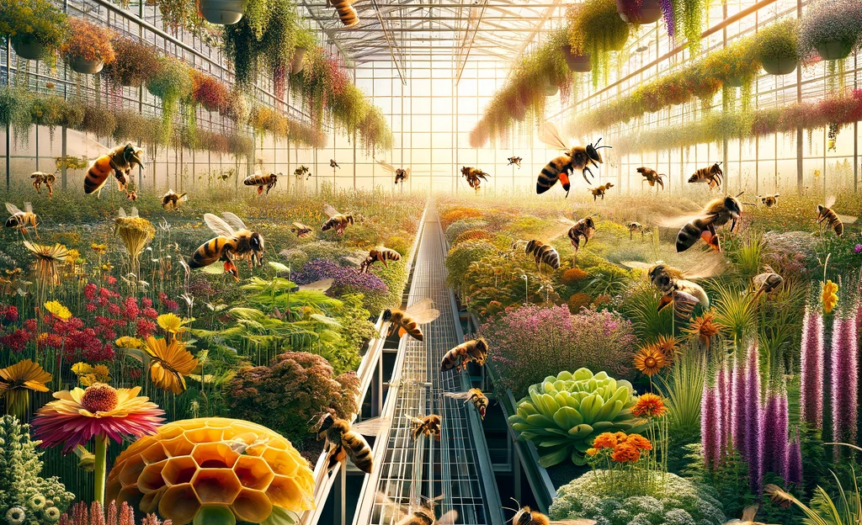The Role of Greenhouses in Plant Cultivation
Greenhouses have long been a cornerstone in the realm of gardening and agriculture, serving as controlled environments where plants can thrive irrespective of external weather conditions. By manipulating factors such as temperature, light, and humidity, greenhouses offer an ideal setting for growing a variety of plants. This method of cultivation not only extends the growing season but also increases crop yield and quality, making it a preferred choice for gardeners and commercial growers alike.
Understanding The Microclimate Inside a Greenhouse
The success of a greenhouse largely depends on its ability to maintain a stable microclimate. This includes regulating air flow, ensuring adequate ventilation, and balancing humidity levels. Such a controlled environment helps in the prevention of plant diseases and pests, which are common challenges in open-air gardening. Moreover, greenhouses can be equipped with automated systems for watering and feeding plants, further reducing the labor required for their maintenance.
The Crucial Role of Pollinators in Greenhouses
One often overlooked aspect of greenhouse gardening is the role of pollinators. Bees, being pivotal in the process of pollination, contribute significantly to the health and productivity of plants. In enclosed spaces like greenhouses, the presence of bees can be a game changer. For instance, the article Honey Beeswax Candle from Bee Buzz Hive explores the fascinating world of bees, shedding light on how these industrious creatures can be integral to a thriving greenhouse ecosystem. By facilitating the transfer of pollen from one flower to another, bees ensure the growth of healthy fruits and vegetables, thereby enhancing the overall yield.
Expanding The Educational And Community Outreach
A vital and often overlooked aspect of combining greenhouse gardening with beekeeping is its potential for educational and community outreach. This unique combination offers a powerful platform for educating people about the importance of sustainable practices and the crucial role bees play in our ecosystems. Community greenhouses can become centers for learning, where individuals and groups, especially the younger generation, can engage in hands-on experiences.

They can learn about plant biology, the intricacies of pollination, and the challenges facing bee populations. This approach not only raises awareness but also fosters a sense of responsibility and connection to the natural world. By opening up these spaces for workshops, school visits, and community projects, greenhouse gardeners and beekeepers can inspire and empower others to take part in environmental stewardship, creating a ripple effect that benefits both the environment and the community. In this way, greenhouse gardening and beekeeping go beyond mere cultivation and animal husbandry; they become tools for building a more informed, engaged, and environmentally conscious society.
Choosing The Right Plants For Your Greenhouse
When it comes to selecting plants for a greenhouse, it’s essential to consider those that will benefit most from this controlled environment. Tomatoes, cucumbers, and peppers are some of the popular choices for greenhouse cultivation due to their sensitivity to climate conditions. Additionally, flowering plants that attract bees, such as lavender and salvia, can be included to encourage pollination. It’s also important to consider the spacing and layout of plants to ensure adequate light exposure and air circulation.
Sustainability And Future Trends in Greenhouse Gardening
The future of greenhouse gardening looks promising with the advent of sustainable practices and advanced technologies. Solar-powered greenhouses, water-recycling systems, and organic pest control methods are paving the way towards eco-friendly cultivation. As gardeners become more conscious of their environmental impact, these green technologies are expected to become more prevalent, leading to greener and more productive gardening practices.
Integrating Beekeeping With Greenhouse Gardening
Incorporating beekeeping into greenhouse gardening presents a unique opportunity to enhance plant pollination while fostering a sustainable ecosystem. By hosting beehives within or near the greenhouse, gardeners can ensure a consistent presence of pollinators. This symbiotic relationship not only benefits the plants but also supports the health and proliferation of bee colonies. As bees thrive in the greenhouse environment, they, in turn, contribute to the pollination process, essential for the development of many fruits and vegetables.
Environmental Impact And The Importance of Bees
The environmental impact of greenhouse gardening can be significantly positive, especially when combined with bee-friendly practices. Bees play a crucial role in maintaining the balance of ecosystems and the biodiversity of plant species. By encouraging the presence of bees in greenhouses, gardeners not only enhance their crop yields but also contribute to the conservation of these vital pollinators. This approach aligns with the growing global emphasis on sustainable agriculture and the urgent need to support bee populations amid challenges like habitat loss and climate change.
Future Prospects: Innovation in Greenhouse Gardening And Beekeeping
Looking ahead, the intersection of greenhouse gardening and beekeeping is ripe for innovation. The development of bee-friendly greenhouse designs, integration of smart technology for monitoring hive health, and research into plant varieties that best support pollinators are areas with tremendous potential. As gardeners and beekeepers adapt to the changing environment and embrace new technologies, the future of this harmonious relationship between greenhouses and bees looks bright, promising a sustainable and productive path forward in both gardening and bee conservation.






